
How to choose the right hiking or trekking jacket?
As a hiker or trekker, a hiking jacket is an important part of your equipment. Not to mention that choosing
the right jacket is essential to guarantee an enjoyable adventures (especially when the weather isn't
guaranteed). However, sometimes it's difficult to find the right pair. So for you, here is the complete guide
to choosing the right hiking jacket!
When hiking or trekking, it is important to dress well. There are many different hiking jackets available and
it is not always easy to know which one will be the most useful. We’ll share our tips to guide you in your
choice and help you to hike or trek comfortably whatever the weather.
What is the purpose of a mountain hiking jacket?
For your mountain outings, the hiking jacket is a2nd or 3rd layer that protects against wind, rain, snow and cold. It is also used to protect against natural elements such as bushes, brambles or rubbing against stones etc. There are two main types of hiking jackets: the softshell jacket and the waterproof jacket. All are designed for different purposes and do not offer the same protection. We share the details for each type of jacket in the rest of this article.
Waterproof
Hardshell jacket
The waterproof jacket will protect you from wind, rain and snow. Its waterproofing and breathability will depend on its components and construction. Often lightweight and compact, it fits easily into a backpack.
View our models
Softshell
The Softshell jacket provides warm protection from wind, light rain or snow. It is a good combination of a warm jacket and a windcheater.
View our models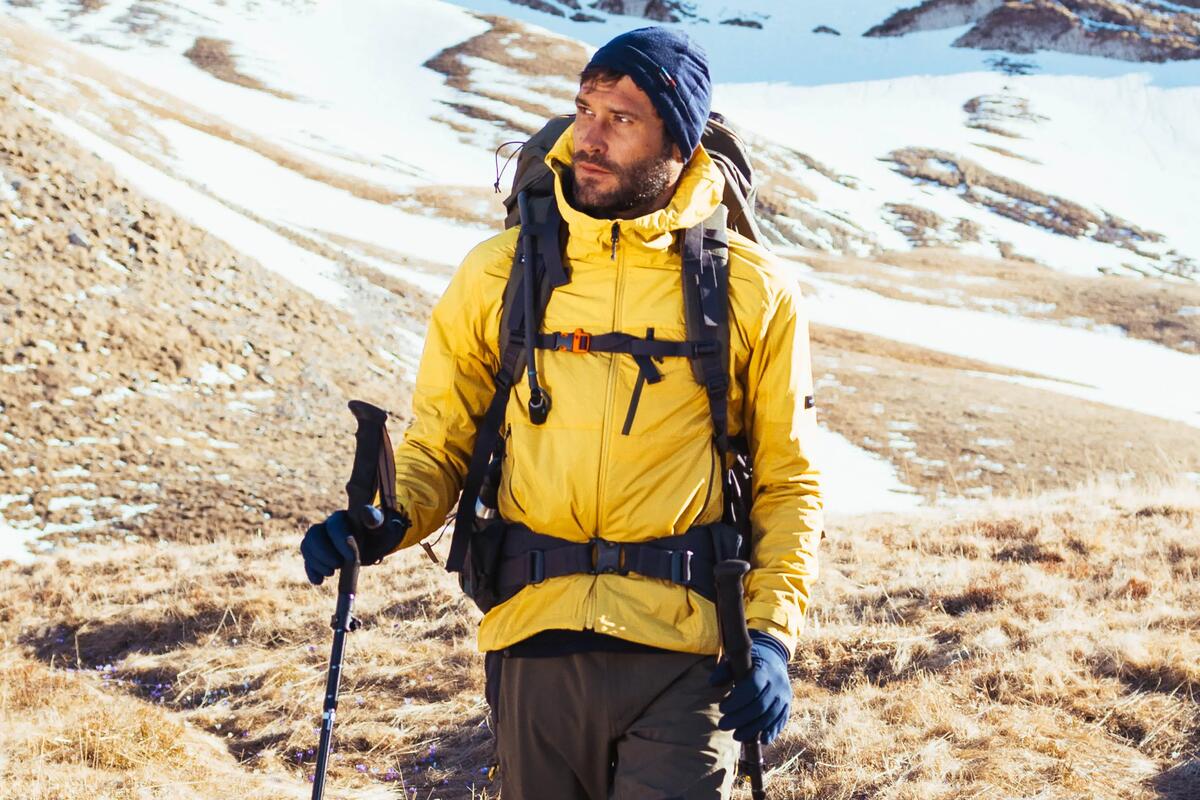
Windcheater
The windcheater is an ultra-light jacket. It offers protection only against wind and has good breathability.
View our models
Poncho
The poncho has the advantage of being light, compact and very waterproof. The poncho will not be very breathable, though.
View our models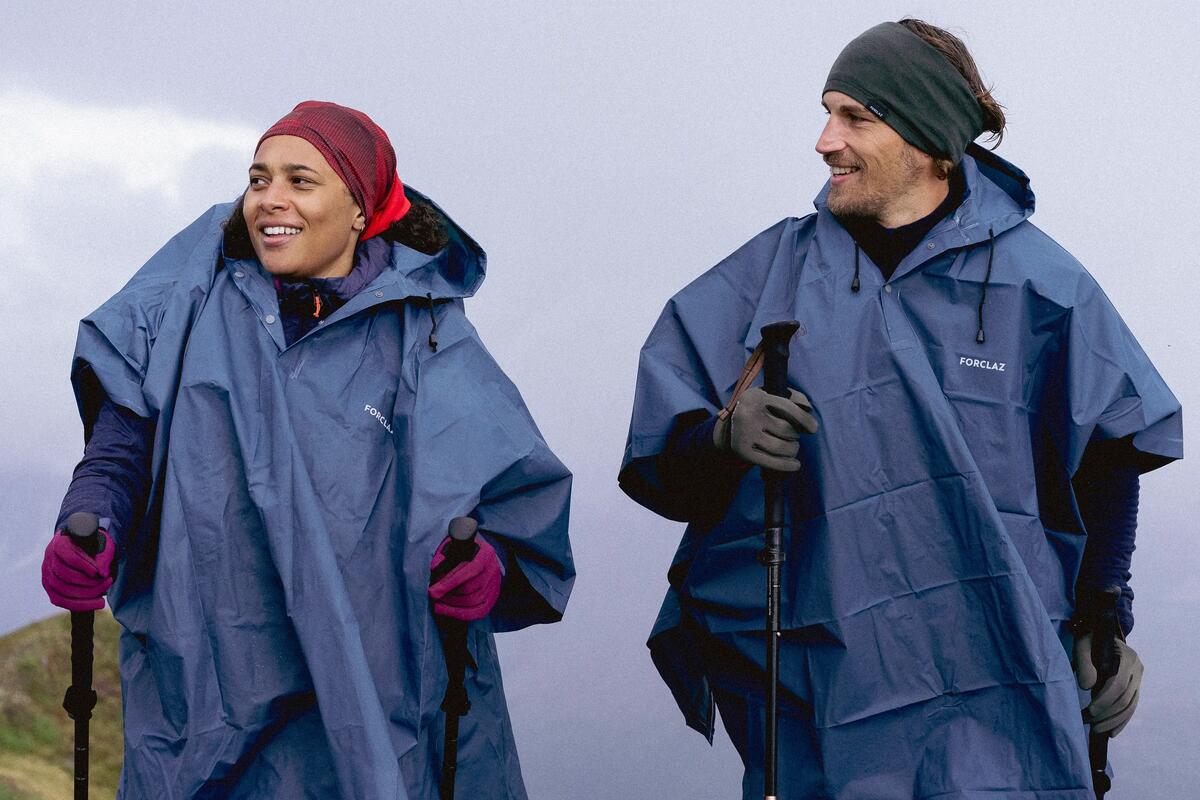
The waterproof jacket or "hardshell"
In the 3-layer technique, the waterproof hiking jacket, or so-called hardshell, serves as layer 3. It provides
protection against external elements such as wind, rain or snow.
Waterproofing depends on several criteria: its components and construction.
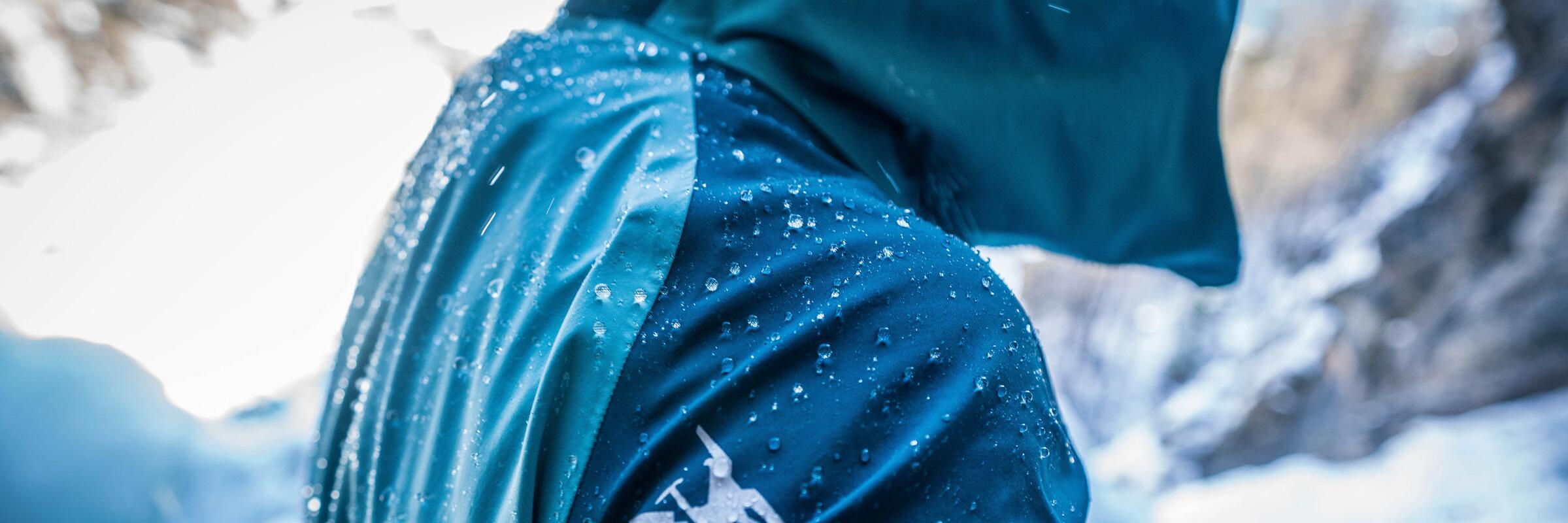
The component of a jacket may have a coating or a membrane, which will provide more or less
breathability and protection against rain.
- The coating is similar to a paint layer applied to the inside of the fabric. It prevents water penetration
from the outside.
- As for the membrane, it is a kind of very thin plastic film (polyurethane) that makes the component
waterproof whilst remaining breathable. It has the advantage of being more flexible, lighter, more durable and
often more breathable than a coating.
In addition, the construction of the component is assessed according to its
layers and the watertightness of its seams.
- The 2-layer component: The membrane is glued only to the outer fabric; the inner protective
lining is free.
- The 2½-layer component: The membrane is glued under the outer fabric and protected inside
by a fine film.
- The 3-layer component: The membrane is glued between the outer and inner fabric.
Poncho or waterproof jacket?
What are the differences when hiking in the rain?
Ponchos have the advantage of being light, very compact and some let you protect your bag.
Ponchos, however, are not very breathable.
Waterproof jackets are more effective in windy conditions than a poncho. However, it is necessary to add rain cover
to protect your hiking or trekking bag.
The poncho can also be worn over a hiking jacket in case of severe weather conditions during your mountain
outings.
Discover
our hiking ponchos
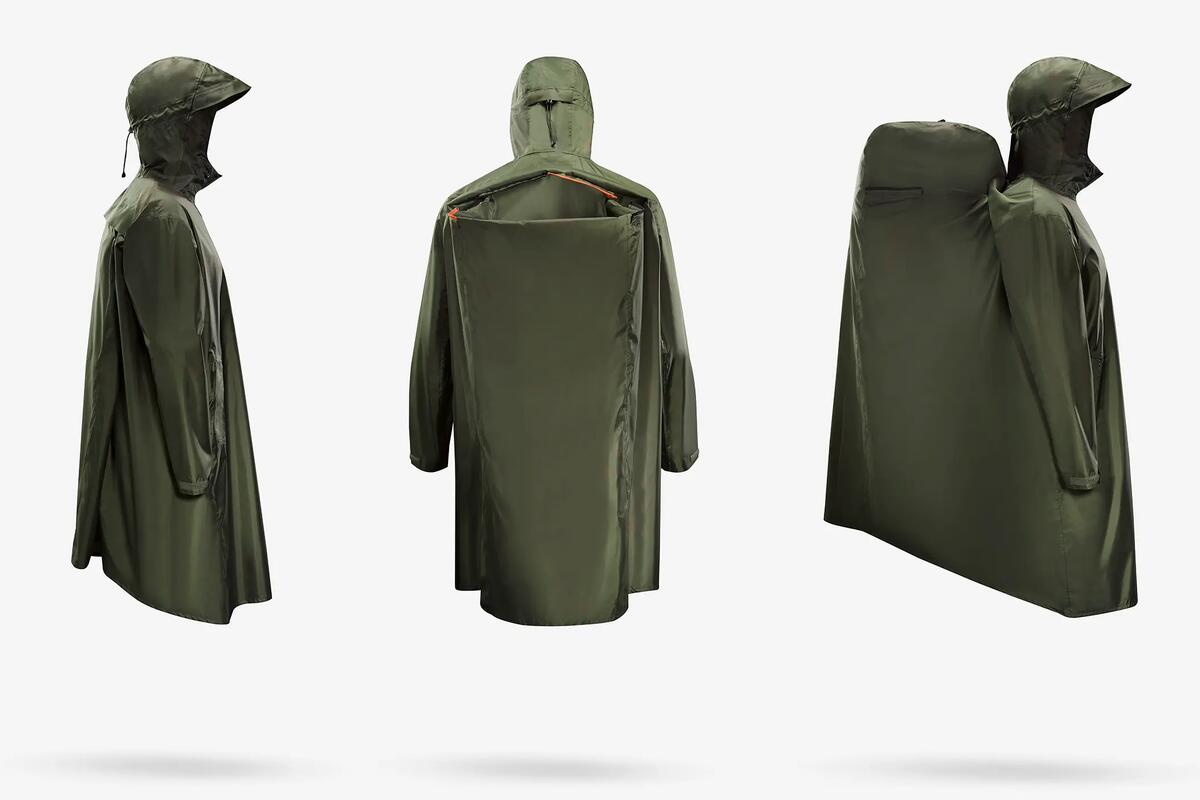
The softshell, a warm, windproof jacket
It is a warm protective jacket that protects you from the wind and a short downpour (about
30 mm) of light rain or snow.
The fabric used is an assembly of 3 materials: a breathable, windproof microporous membrane
sandwiched between the water-repellent outer layer and the inner one made from warm, comfortable fleece.
Softshell jackets have the advantage of being compact, and can be easily packed
into the bottom of the bag. They come in handy when the weather is variable, if the wind picks up
during your hike, or when temperatures cool down at the end of the day, or in the evening in a bivouac.
Softshell jackets come with or without a hood to keep your head warm and dry. The latter
can be useful if you have a waterproof jacket in your bag that you can take out if the weather changes.
Similarly, in a bivouac, the hood is not always necessary.
Note: In case of heavy rain, a waterproof jacket should be used in addition to or instead of the softshell.
Discover
our softshells
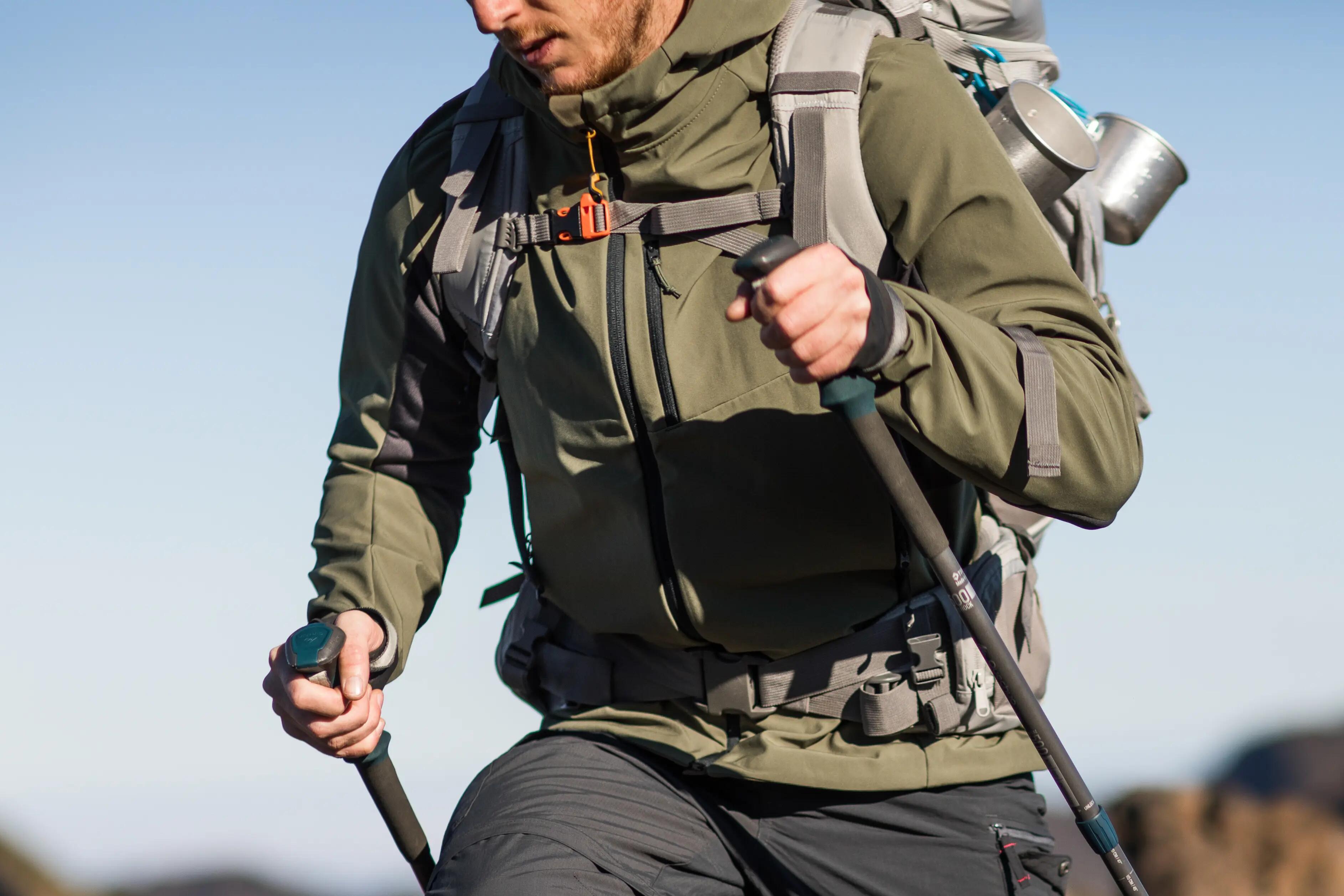%20H.jpg?format=auto&quality=60&f=0x800)
Spotlight on waterproofing
The waterproofing rating is measured by the fabric's resistance to water pressure, expressed in terms of the height of a water column in mm (test based on the ISO 811 standard). The higher the pressure, the more waterproof the fabric. A component with a 10,000 mm waterproof rating, i.e. it can withstand the pressure of the 10,000 mm column of water. This is also equivalent to 10,000 Schmerbers. 1 Schmerber = 1 mm water column = 0.1 mbar.
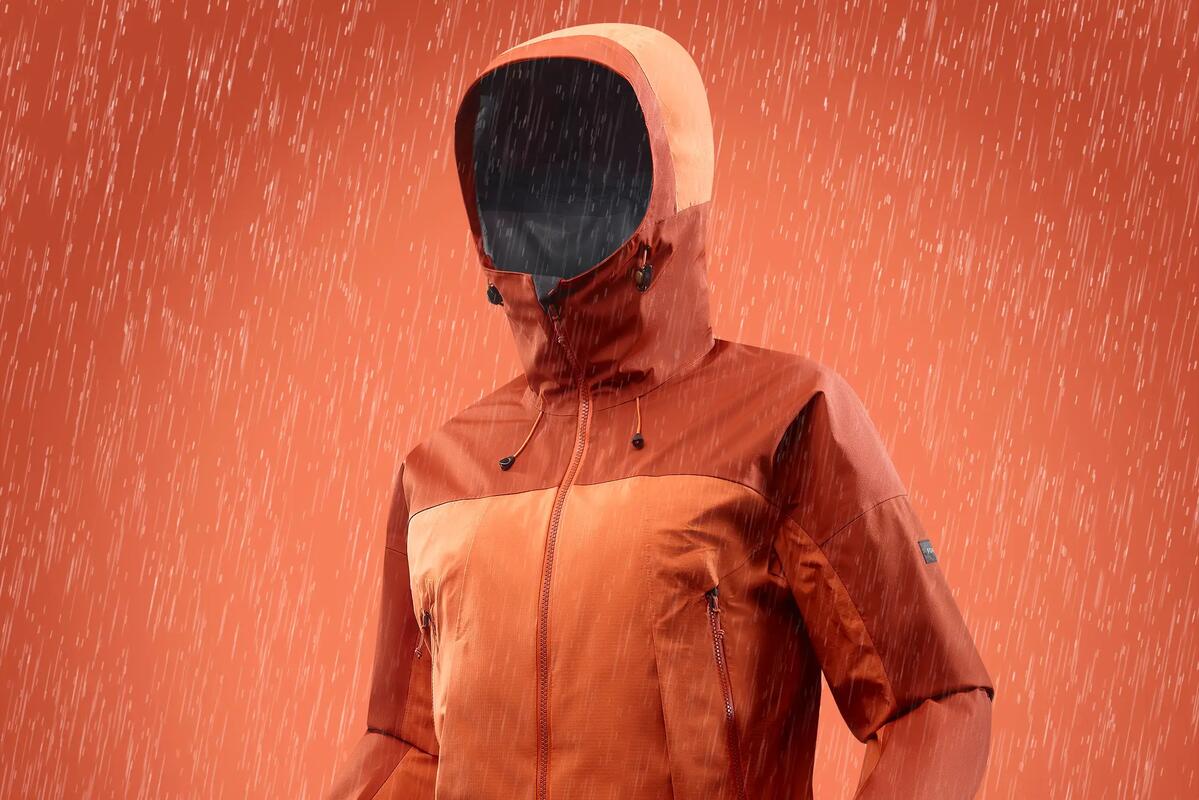
Windcheater jacket
The ultra-light windproof jacket, as its name suggests, only protects against wind. It can be water-repellent but it is not waterproof. The main advantage of this type of jacket is its lightness. It is designed to provide wind protection during strenuous activity while still allowing good breathability.
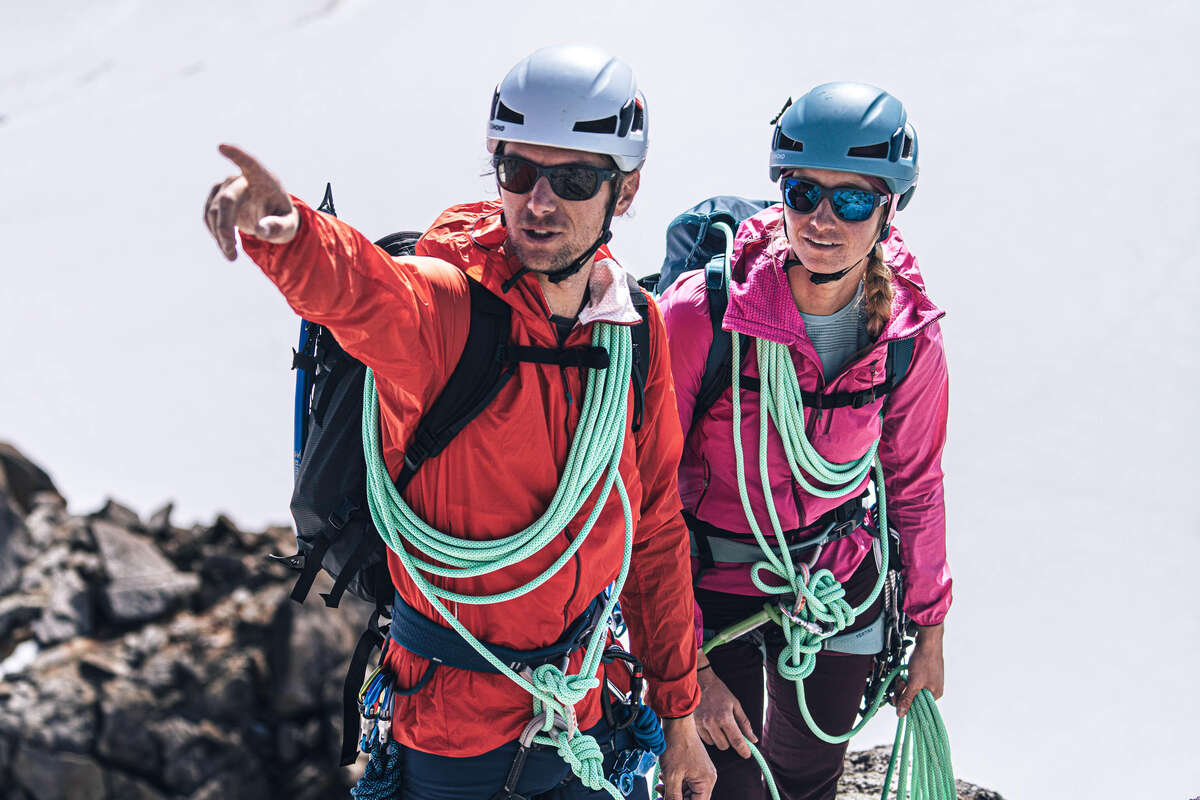
3-in-1 jacket: Versatile for the whole year
If you are looking for a versatile hiking jacket for year-round hiking in all weather conditions, both cold
and warm, the 3-in-1 jacket may be a good compromise.
The advantage of a 3-in-1 jacket is that you can wear either the jacket with the 2 layers together, the
inner layer alone, or the jacket alone. This 3-in-1 jacket will be ideal in cold conditions, with good
thermal insulation (for temperatures down to -25° for the most technical jacket). For the milder days of
mid-season, you can leave the inner layer (fleece or down jacket) at home or folded in your bag and just
wear the rain jacket. You can also wear the down jacket or inner fleece by itself as a mid-layer over a
T-shirt and jumper. With a single jacket, you have 3 possibilities, either the 2 layers together, or the 1st
layer alone, or the 2nd layer alone.
The pieces are easily assembled and separated with zips.
Our
3-in-1 jackets

Kids’ hiking jackets
Well equipped, you can let your kids head off on an adventure in total confidence! Their jackets are there to protect them from the rain, jumping in puddles and even water fights with their bottles... See the children's jackets

There are therefore several types of hiking jackets, more or less waterproof, whose choice will depend on the
following criteria:
- The length of your outing
- The weather
- The intensity of the workout
The duration of your outing
First up when it comes to criteria for choosing your hiking jacket: the duration of your hike. This is what will guide you towards a jacket that is more or less technical, more or less waterproof, warm or windproof.

FOR A DAY-LONG HIKE
If you are only heading off on a few hours hike, the choice of jacket will depend on the terrain you have chosen to hike on. So head to the next paragraph to continue in your decision!
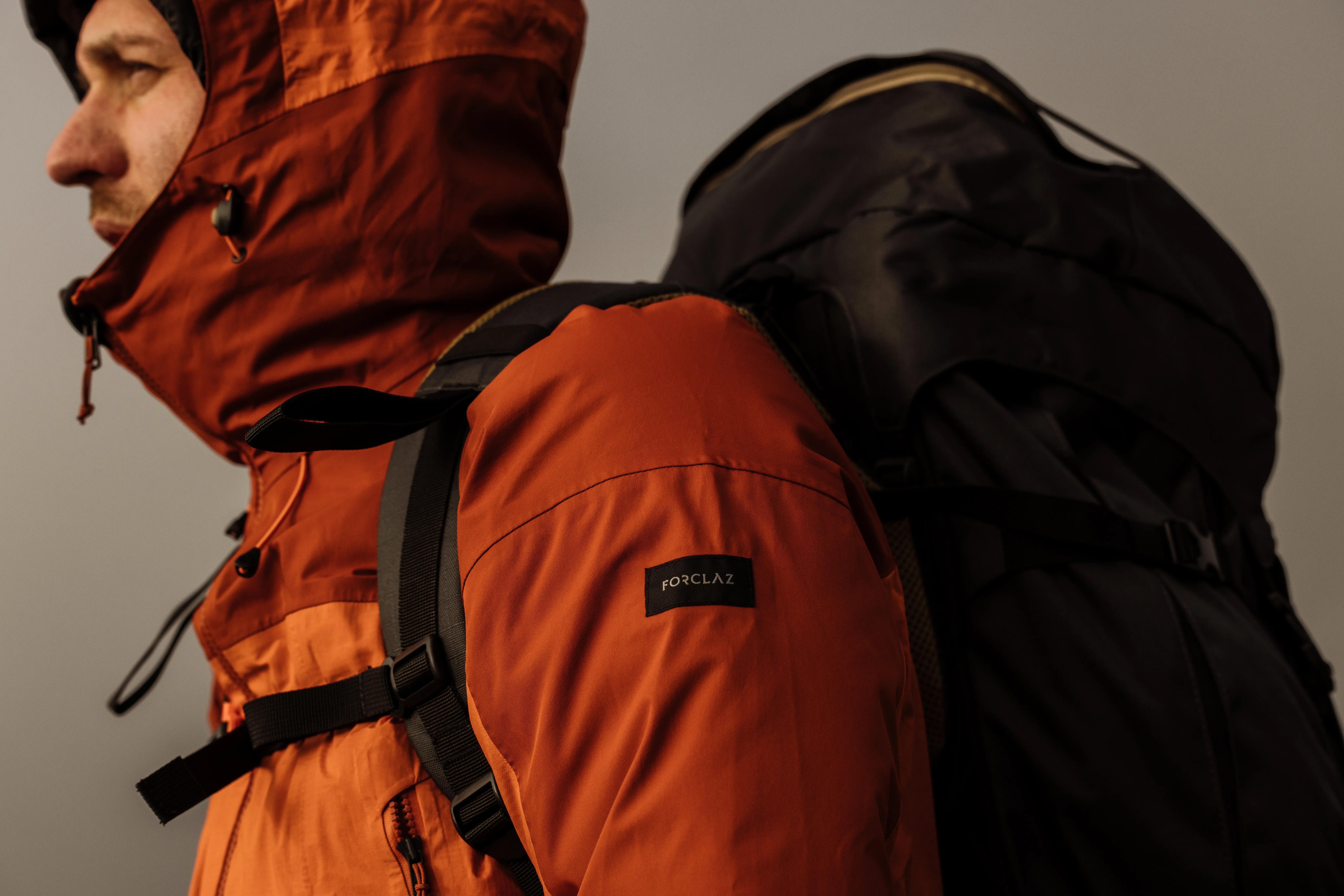.jpg?format=auto&quality=60&f=0x800)
FOR A HIKE OVER SEVERAL DAYS
A trek jacket will allow you to adapt to all weather conditions. They are compact and resistant, so you can easily take it wherever you go.
The weather
The region and the season can also impact the protection level that you'll need. Whatever it is, the
weather will be a defining factor when choosing your hiking jacket.
So, what if the weather is mild when you set off? All you need is a rain jacket, which
you can slip into your rucksack before setting off... In this case, no need to look at the more
technical jackets. Clothing that will guarantee protection from rain shows will be more than enough.
However, make sure you always have one with you, because you never know when a rain shower is going to
creep up on you! Especially if you're taking on mountains!
On the contrary, if you're a hardened hiker and long hikes in the middle of winter don't scare you:
you're going to need a jacket with more protection. Not to mention a jacket that is
more compact and more lightweight (so that you can easily carry it with you).
So, what if the weather conditions are looking pretty chaotic? In this case, choose a
jacket with a high level of waterproofing and warmth. Just what you need to take on
storms and heavy rain, even halfway up a mountain.
Note that for each jacket, the waterproofness is rated on a scale from 1 to 5. These
scores result from technical laboratory tests, the higher the score, the more waterproof the jacket
(this rating is available on the technical information sheet for each jacket).
SHOWER PROTECTION
Ratings of 2 and 3 indicate that the jacket can offer protection during a shower with 6-12 cm of
rainfall in 1-2 hours.
STORM PROTECTION
A rating of 4 indicates that the jacket can offer protection during a storm with 30 cm of rainfall
in 3 hours.
STORM PROTECTION
A rating of 5 indicates that the jacket can offer protection during a thunderstorm, with 1.8 m of
rainfall in 4 hours!
The intensity of your activity
The final criteria to consider is the intensity of your hike. The higher the level of effort, the
more likely you are to perspire and your hike may become uncomfortable. Technically, you should know
that the more waterproof a jacket is, the less breathable it is. Indeed, the technologies
used inside your jacket to manage waterproofing allow heat to be evacuated efficiently for moderate
effort. Some windproof, softshell, waterproof hiking jackets are equipped with mechanical
ventilation, allowing them to evacuate the maximum amount of heat in a very short time, regardless
of the conditions, in periods of intense or very intense effort.
Mechanical ventilation is when there's a ventilation zip. These are generally located under
the arms, but some pockets also have mesh which helps with sweat wicking. For even better
ventilation, wear breathable clothing underneath your jacket and remember to keep your sleeve cuffs
and jacket bottoms open.
Just remember this: In order for a hiking jacket to provide you with the comfort you need, it is
essential that it offers good breathability in order to avoid excessive perspiration that could
cause discomfort. When selecting your jacket, don't forget to pay attention to this criterion.
